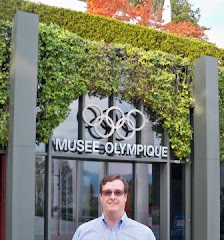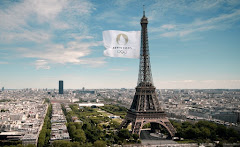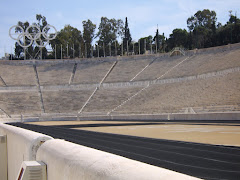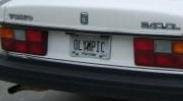 When snowboarding entered the Winter Olympic roster in 1998 at Nagano, the thrill of victory and the agony of defeat video on "Wide World of Sports" seemed destined to receive new footage to replace the famous ski jumper gone wild.
When snowboarding entered the Winter Olympic roster in 1998 at Nagano, the thrill of victory and the agony of defeat video on "Wide World of Sports" seemed destined to receive new footage to replace the famous ski jumper gone wild.I remember watching Japan's snowboarding broadcasts -- crazy feats, crashes and all -- but admit none of the athlete names stuck with me (I was too busy chatting online with two of Iceland's female ski team members via the IBM Olympic Village athlete email system).
The same is true for 2002 and 2006 -- no snowboarder names come to mind now (though Phoebe Mills' transition from gymnastics to snowboarding, and Shaun White's name, "stuck" with regards to the snow sport after 2010).
And it was interesting to learn about the earliest days of snowboarding when the guy who started it all sadly died last year.
With snowboarding curiosity on the brain, yesterday I seized the opportunity to speak with Chris Klug, the three-time Olympian who, I learned, was the first Team USA snowboarder announced for Nagano in '98. Klug went on to win bronze on Valentine's Day in 2002 at the Salt Lake Games (though I attended women's snowboarding on the first Sunday of the Games, travels took me to downtown Salt Lake most of the day that Feb. 14, missing Klug's medal-winning competition -- come to think of it, I spent that evening at Iceland's special pavilion in the Olympic city, but not a single female ski team member showed up).
Back to the call with Chris ...
"Winning bronze [in front of] 25,000 fans, 100 close friends and family," ranks among Klug's favorite Olympic memories.
By phone, Klug also said being the first to qualify in 1998, and walking in to the Nagano Olympic opening ceremony with his coach in awe, exclaiming, "Can you believe how far our sport has come?!" also topped the list of five-ringed recollections.
Arriving as the team's elder statesman, at age 37, in Vancouver also came to mind, said Klug. He said in 2006 he did some broadcasting work during the Torino Games.
But all Olympic glory and memories pale in comparison to what Klug expressed as the biggest moment in his sports career and life: Learning he needed a new liver, and then receiving it through organ donation after a tense waiting game that spanned most of the 1990s.
"I remember getting the call," said Klug.
That call came in 2000, nine years after the diagnosed need for a liver. Klug added that although he was healthier post-transplant, it was a "scary process."
So, in this post, I buried the lede until now: Chris Klug is the only Olympian, summer Games or winter, to compete as an organ transplant recipient.
According to his website, and paraphrasing from our conversation, "The hardest part of the process was the waiting game leading up to my transplant," according to Klug.
Now a real estate agent, part-time snowboard coach and hands-on contributor to the charity he founded, Klug spends a lot of time and energy expressing gratitude for the second chance at life provided by an organ donor.
Klug wants people to know the facts about organ donation, and on the call the G. David Fleming, president and CEO of Donate Life America, shared many important stats everyone should read.
"We want people to realize organ transplants only happen as a result of a family decision to donate," said Fleming.
Taking the steps to register for donation is key.
Organ donation is a topic my mom and I discussed in 1989 in the final days before earning my first driver's license in Oklahoma (at the time and likely now still, parental consent was a requirement). By the time my adult Georgia license paperwork got completed, checking the organ donor box was quick and easy, the right decision for this blogger.
But it was not until recent months that the power of organ donation hit closest to home, as my good friends the Taylor family welcomed their first son into the world. The family learned their baby boy needed a new liver only days after his birth, and young Aaron eventually received the miracle of two liver transplants thanks to the kindness of strangers (read their story of bravery and perserverance via CaringBridge with some Kleenex). I know the Taylors share infinite gratitude similar to the thanks expressed by Klug.
April is national Donate Life month, and I hope this post will inspire many to take a few minutes to learn more and discuss organ donation with those they love most, then if it's right for them, make time to register.
Sharing Klug's inspirational tag line: "Enjoy the ride -- don't take a single turn for granted."
Photo by Dennis Schroeder via ChrisKlug.com






























